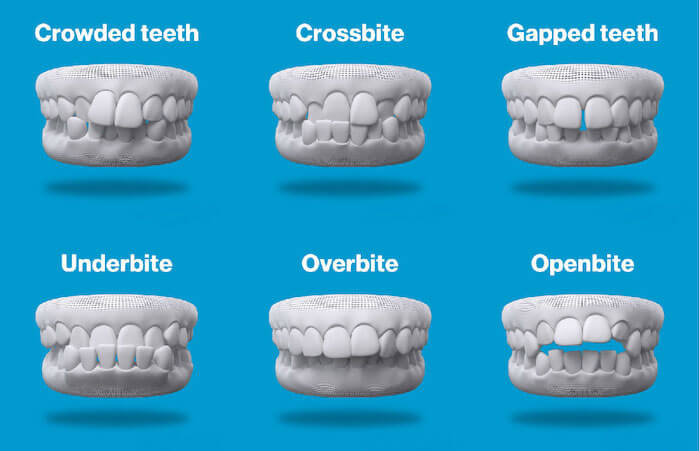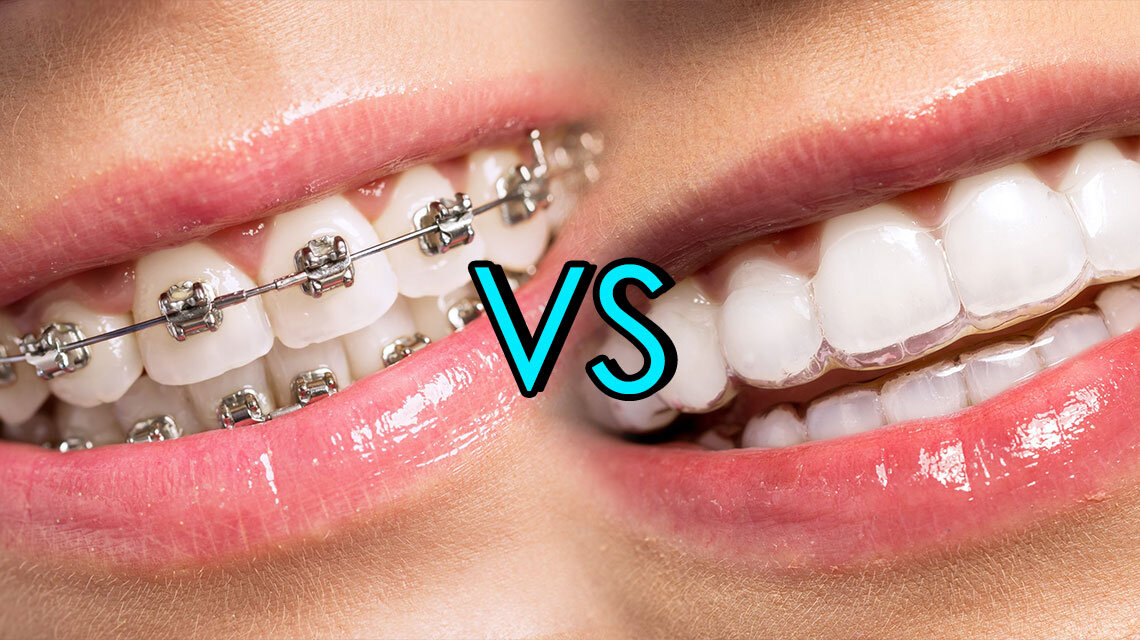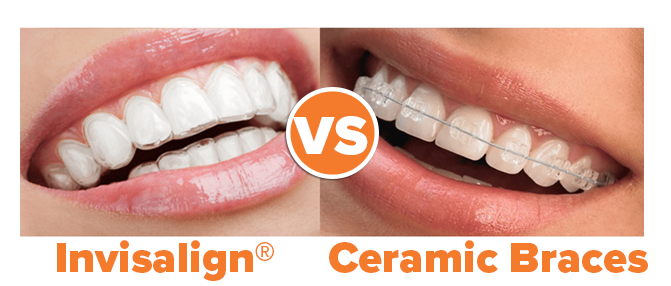Invisalign for Teens: A Modern Solution to Straightening Young Smiles
Invisalign for Teens: A Modern Solution to Straightening Young Smiles
Blog Article
Invisalign vs. Traditional Braces: Which Alternative Is Right for You?
When considering orthodontic treatment, the option in between Invisalign and typical dental braces offers several crucial aspects that warrant mindful evaluation. Invisalign provides a discreet option with removable aligners, while standard dental braces supply an extra noticeable yet effective solution for severe imbalance. Each choice incorporates distinct advantages and downsides connected to visual appeals, comfort, therapy period, and cost. Understanding these nuances is critical for making an educated choice that lines up with your personal preferences and lifestyle. The inquiry continues to be: which option will ideal satisfy your orthodontic requirements and expectations?
Summary of Treatment Options

In comparison, traditional braces include steel braces and wires that are bonded to the teeth. This approach applies constant stress with time to accomplish placement. While efficient for complicated orthodontic concerns, traditional braces call for normal sees for changes and can position difficulties in keeping dental health due to the difficulty of cleansing around cables and braces.
Both alternatives have their merits, and the option often hinges on particular dental conditions, way of life choices, and person compliance. Ultimately, seeking advice from an orthodontic specialist is crucial for identifying the most suitable treatment strategy tailored to private requirements. Comprehending the nuances of each choice can substantially affect the total success of orthodontic treatment.
Visual Considerations
A considerable element influencing the option in between Invisalign and conventional braces is the aesthetic allure each therapy uses. Invisalign aligners are crafted from clear plastic, making them basically invisible when put on. This very discreet look is particularly appealing to teens and grownups who might really feel uneasy about their orthodontic treatment. The capacity to keep a natural smile throughout the alignment procedure can substantially improve the client's self-confidence in social and expert setups.
On the other hand, typical braces contain steel brackets and cords, which can be extra visible. While developments in orthodontic technology have actually caused the growth of smaller brackets and tinted elastics, standard dental braces still preserve an even more conspicuous profile. For some people, the visibility of braces might prevent them from seeking necessary therapy.
Ultimately, the selection in between Invisalign and traditional dental braces might pivot on personal choices pertaining to visual appeals. Patients who prioritize discernment often lean towards Invisalign, while those that are less concerned concerning presence might select typical braces. Comprehending the aesthetic ramifications of each choice is vital for making an educated decision that aligns with one's way of living and preferences.
Comfort and Convenience

In terms of ease, Invisalign aligners are removable, enabling patients to enjoy their favorite foods without constraint and preserve optimal dental health. Brushing and flossing are streamlined, as the aligners can be gotten during these regimens, whereas standard braces call for cautious maneuvering around cords and brackets.
In contrast, standard braces require normal modifications, making them much less convenient for those with hectic timetables. Overall, the comfort and ease of Invisalign make it an enticing option for lots of people looking for orthodontic therapy.
Treatment Duration and Performance
While both Invisalign and conventional dental braces are effective in remedying oral misalignments, the duration of treatment can differ significantly between the two alternatives. Generally, Invisalign treatment can take anywhere from 12 to 18 months, depending upon the intricacy of the instance. The clear aligners work by gradually moving teeth right into their wanted positions, and regular follow-ups with an orthodontist assistance make sure progression stays on track.
In contrast, standard dental braces usually require a longer commitment, usually ranging from 18 months to three years. This is because of their fixed nature and making use of cables and brackets, which can be a lot more efficient for complicated situations and severe misalignments (Invisalign). The treatment effectiveness of traditional dental braces is well-documented, as they permit precise adjustments and better control over tooth activity
Inevitably, the option between Invisalign and conventional braces may depend upon both the awaited therapy period and the details oral concerns handy. Consulting with an orthodontist is essential, as they can provide tailored recommendations based on specific demands, ensuring the picked technique lines up with desired outcomes and durations.
Expense Comparison and Insurance Coverage Choices
Cost plays a significant role in the decision-making process for people taking into consideration orthodontic therapy, whether choosing Invisalign or conventional braces. On standard, the price of Invisalign varieties from $3,000 to $8,000, while conventional braces generally cost in between $2,000 and $6,000. Aspects influencing these prices consist of the intricacy of the case, the duration of therapy, and geographical area.
Numerous oral insurance policy plans supply partial protection for orthodontic therapies, however the specifics can vary extensively. Usually, standard braces may be more regularly covered by insurance policy plans compared to Invisalign, which some insurance companies categorize as a cosmetic procedure.
In addition, numerous orthodontic methods provide adaptable settlement strategies, making both therapy choices extra available. Individuals need to ask about potential financing alternatives and discount rates for ahead of time payments. Assessing the complete price, including insurance policy advantages and settlement plans, is crucial for making an educated choice that lines up with both aesthetic preferences and budget plan considerations.

Conclusion
In recap, the option between Invisalign and traditional dental braces pivots on several elements, consisting of check this site out visual choices, convenience, therapy duration, and expense. Invisalign provides a discreet, detachable option that promotes dental hygiene and dietary adaptability, while standard dental braces may be preferable for complicated oral concerns and usually come at a reduced price factor. Inevitably, consultation with an orthodontist is important to evaluate individual conditions and figure out the most appropriate therapy option for attaining ideal dental placement.
When thinking about orthodontic therapy, the option in between Invisalign and conventional dental braces provides numerous crucial elements that merit careful analysis.Comparing Invisalign and typical braces discloses unique therapy choices for orthodontic correction.While both Invisalign and standard braces are efficient in dealing with dental imbalances, the duration of treatment can differ substantially in between the two alternatives.Cost plays a considerable duty in the decision-making useful source process for people taking into consideration orthodontic treatment, whether choosing for Invisalign or traditional braces.In recap, the selection between Invisalign and standard dental braces hinges on several variables, including aesthetic choices, convenience, treatment period, and price.
Report this page